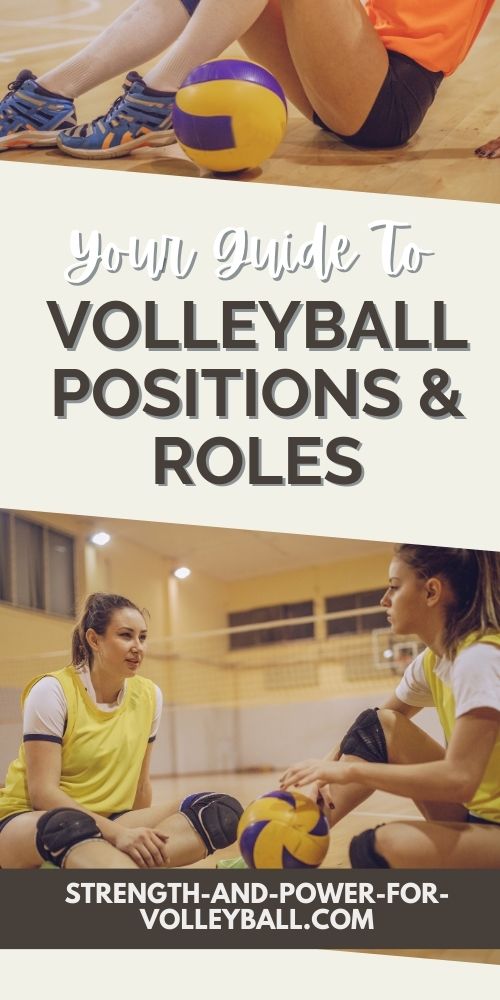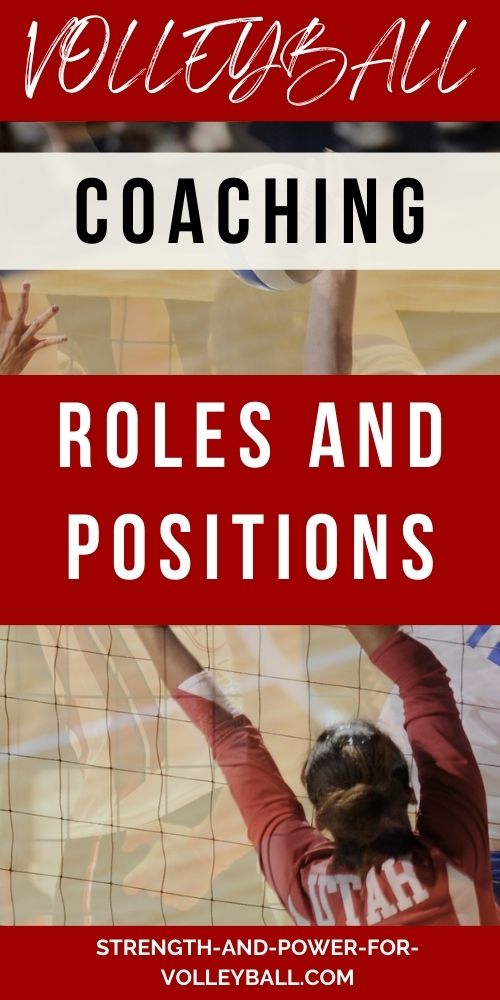Volleyball Positions and Roles
Learn volleyball positions and roles to better understand how to play volleyball. The 7 main positions in volleyball are setter, outside hitter, middle blocker, opposite hitter, libero, defensive specialist and serving specialist.
Setter - Volleyball Positions and Roles
To win in volleyball, a team needs to attack. The setter is the player on the team that delivers the set to an attacker. One of the main goals of the team is to pass the ball to setter so the setter can set the ball.
The good setter is highly trained at setting the ball.
The setter sets the ball by using an overhead two hand finger action on the ball.
The setter get's good at setting by practicing setting to targets. The more accurate the setter is, the more better chance the attacker has at having a successful attack.
Most teams have only 1 or 2 setters.
The setter is involved in every ball that crosses the net because the team wants the setter to take the 2nd hit.
The role of the setter is key to success in volleyball.
The setter has a lot of control over the offense.
The setter communicates with the team to encourage good passes.
When the attackers are struggling, the setter will offer encouragement to keep the team's confidence high.
The setter needs to have good ball-handling skills because the setter will serve, play defense and sometimes attack from the front row.
If a team is running a 5-1, the setter will also need to block.
Since the setter is the player setting the attackers, the setter needs to have good decision making skills. What player gets set and when will often determine how successful a team is.
Outside Hitter - Volleyball Positions and Roles
The outside hitter is also known as the left-side attacker because this player attacks at the left-side of the court.
This player is an outside hitter often receives serves and is a primary attacker.
With being one of the main go-to attackers, the outside hitter has versatile spiking abilities.
The outside hitter and setter work together to attack the opponent.
The outside hitter's ability to make successful attacks will often dictate the team's success.
Middle Blocker - Volleyball Positions and Roles
The middle blocker is also known as the middle hitter. This player is more often referred to as the team's "middle" because this player as the responsibility of blocking middle.
This player plays in the front-row in the middle of the net.
Typically the middle blocker will focus primarily on blocking.
However, the middle blocker can be a primary hitter on the front row.
When the middle player attacks, this player usually will run a quick attack to the middle.
The middle blocker needs be quick to move laterally along the net to get in position to block the ball that's set to the opposing outside or opposite attackers.
A team with a good middle attack will often use the "middle" as a decoy.
For example, on a good pass to the setter, the middle hitter can come in and fake a quick attack in the middle. The fake to the middle will draw the opposing middle blocker to stay in the middle to block. As the middle fakes the attack, the setter sets the ball to the outside hitter or sets the ball back to the opposite hitter.
On the other hand, if the middle hitter isn't a threat to attack, then this can make it difficult to run a successful offense because the other attackers will likely be up against 2 blockers.
Opposite Hitter - Volleyball Positions and Roles
The opposite hitter is also known as the right-side hitter. This player plays on the front row opposite the setter. The opposite hitter is usually responsible for attacking and blocking from the right side.
The opposite hitter can be important for a team's offense.
The opposite player is usually fairly tall and has the responsibility of blocking the opponent's outside hitter.
When a team runs a 6-2 offense, the team has two setters. When rotating to the front row, if the setter stays in the match, the setter plays the opposite hitter position. If the setter subs out of the match, the player that replaces the setter is the opposite hitter.
If when the opposite rotates to the back row, if the opposite hitter stays in the match, the opposite now becomes the serve. The opposite would then serve and play defense.
Libero - Volleyball Positions and Roles
The libero is a specialized position that was created to help the game by having a specialized player that is good at passing and defense. The goal was to have longer rallies by having a libero that could help keep the ball from hitting the floor.
The libero is the player on the team wearing a different colored jersey.
The libero has special rules.
For example, the libero isn't allowed to attack the ball above the height of the net.
The libero also can't play across the front row. This means that when the libero rotates to the front row, the libero must come out of the match.
The main role of the libero is passing and defense.
The libero is usually really good at anticipating the hitter and reading the ball.
The libero is also a team leader during serve receive.
and they are responsible for receiving serves and digging balls that are attacked by the opposing team. The libero must have strong ball control skills and be able to read the game and anticipate where the ball will go.
For example, if a team gets stuck in serve receive, the libero will encourage the team to make the next play.
When the libero enters the match, this isn't a substitution. This is called a libero replacement. The player the libero replaces on the court must be the same player that comes back out on the court to replace the libero. The libero can replace any player on the back row. The libero can't legally block. Also, the libero can't attack the ball at any time when the ball is completely above the height of the net.
That libero can't replace a player in front row.
Defensive Specialist - Volleyball Positions and Roles
The defensive specialist is player on the team that specializes in playing on the back row.
The main skills of the defensive specialist are passing and digging.
The defensive specialist substitutes into the match for players on the back row.
The defensive specialist is different from the libero in that the defensive specialist make substitutions. This means the player can only replace a player in one spot in the rotation.
For example, if the defensive specialist subs into the match for one of the middle hitters, then this is the only spot in the rotation the defensive specialist can sub into the set in the future (meaning they can't sub for the other middle also).
This player may also be good at serving.
Like the libero, it's helpful for the defensive specialist to be a leader in serve receive.
Like the libero, the height and jump of the defensive specialist isn't important because this player doesn't play across the front row.
Serving Specialist - Volleyball Positions and Roles
The serving specialist the player that specializes in serving.
Serving can be a critical factor in volleyball.
A team that can put together a serving run has a good chance to win.
Since this player only has the responsibility to come into the match to execute this skill, this player must be really good at performing under pressure.
This player needs to be ready to go at any moment.
Often the coach will call upon this player to enter the match to serve at critical moments.
If you enjoyed this information and would like to keep it close to you at any time, just save this pin to your Pinterest Volleyball Training Board.
- Home
- How to Play
- Volleyball Positions and Roles

